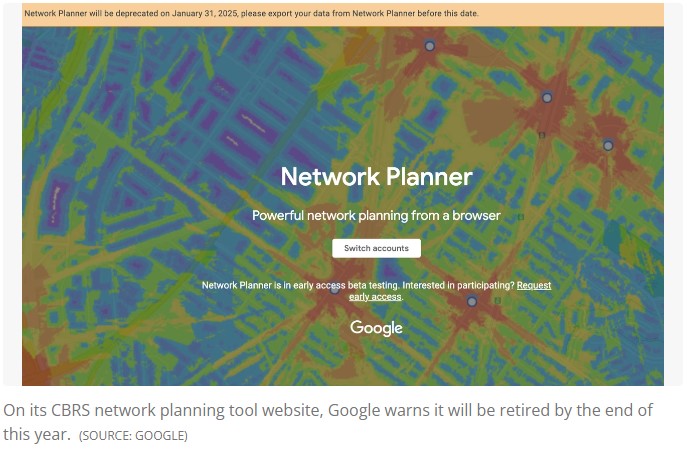Google to retire CBRS network-planning tool
Roughly five years after introducing the service, Google said it will “deprecate” its 3.5GHz CBRS network planning tool by the end of this year.
Google officials didn’t immediately respond to Light Reading’s questions about its decision. On its website, Google offers tips on how users can export their data from their Network Planner projects.
“It’s really a shame,” Richard Bernhardt, SVP of spectrum and industry for WISPA, told Light Reading. WISPA is a trade association that represents small fixed wireless Internet operators, many of which run services through the 3.5GHz CBRS spectrum band.
Google first introduced the network planning tool at a WISPA trade show in 2019. The offering provides 3D modeling of terrain, trees, streets, buildings and other objects. It also uses Google Cloud compute to display RF propagation models, individual link analysis, and heat maps based on real-world data.
“Google Network Planner is an accurate, fast, easy-to-use tool that is integrated with Google geospatial data for highly accurate (1 meter resolution) visualization,” explained Tarana Wireless in a 25-page document detailing how fixed wireless operators can use the tool to deploy its products. “Tarana recommends the use of Google Network Planner where available to achieve accurate, high quality results.”
Alternatives exist
Bernhardt and others working in the CBRS industry argued that the end of Google’s CBRS network planner is unfortunate but not a major roadblock.
“There are others that do provide tools,” Bernhardt said, acknowledging that “it’s not going to destroy the market by not having it there.” But he cautioned that other tools might not be free like Google’s tool is.
Indeed, Federated Wireless just this month announced the general availability of its new Adaptive Network Planner (ANP), which the company said is an AI-powered tool for fixed wireless and private wireless network deployments. Others offering network planning tools include Auvik Networks and Hamina Wireless.
To read the complete article, visit Light Reading.

















